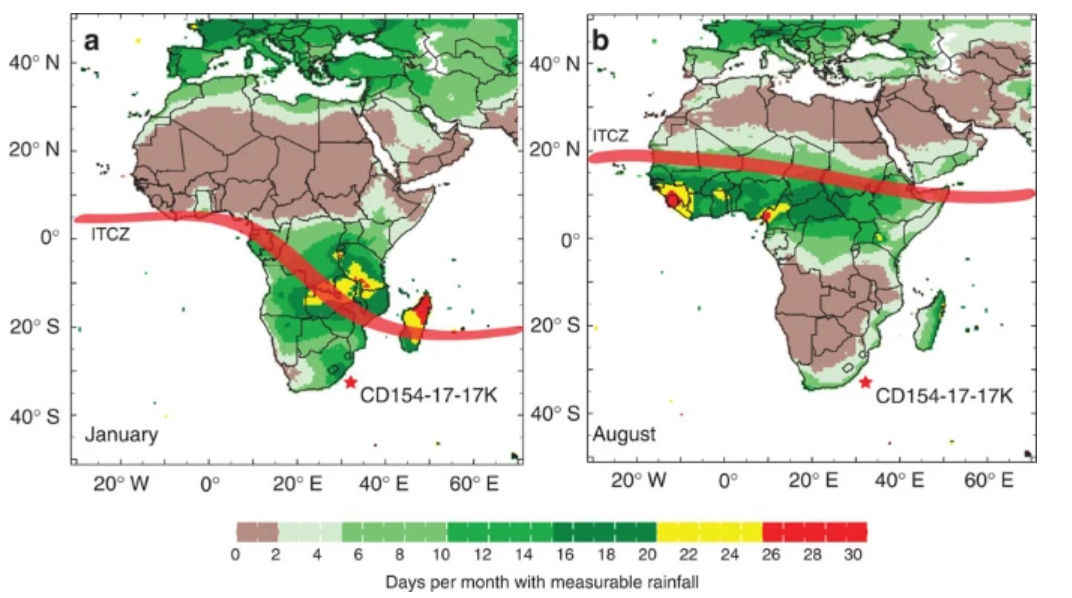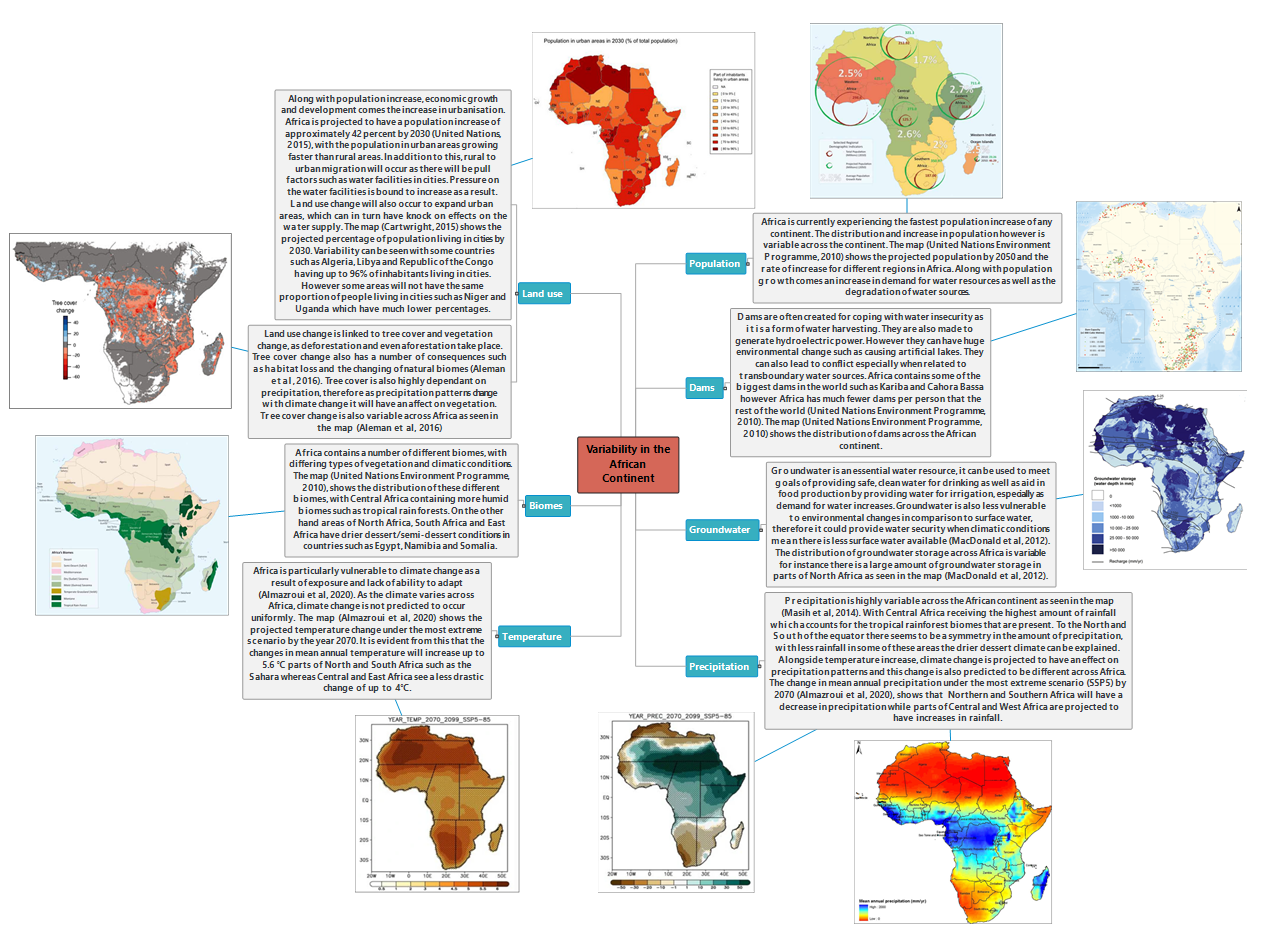It's Raining, It's Pouring...

Reflecting upon the mind map from my post on variability in Africa, I wish to delve deeper into precipitation in Africa in terms of current variability and projected changes. Exploring the physical dynamics and characteristics of water sources allows the our relationship with water and the challenges that are often encountered to be understood. Rainfall in Africa appears to have a latitudinal symmetry, with the greatest rainfall occurring in Central Africa which reduces as you move both north and south of the equator. This spatial variation also occurs seasonally as well which has often been explained by the intertropical convergence zone (ITCZ) ( Ziegler et al, 2013) . The ITCZ forms at a region of low pressure near the equator where ascending Hadley cells meet resulting in rainfall in the tropics (Suzuki, 2011) . The convergence of these trade winds happens seasonally, spreading over different areas at different times of the year (Barry, 2009) . It must be noted that the ITCZ

